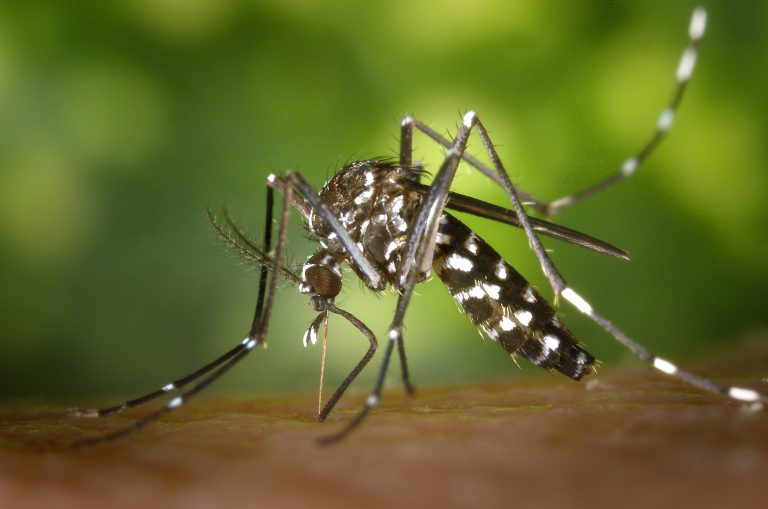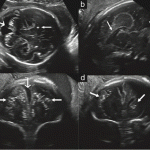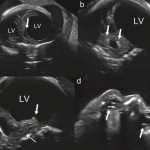- Citas Centro Médico de Caracas: Lunes, Miercoles y Viernes. Pulse el botón Agende una Cita
- Sistema de citas en linea exclusivo para Centro Medico de Caracas en San Bernardino
- Citas CMDLT: Jueves. llamar al 0212-9496243 y 9496245
- Las Emergencias son atendidas en CMDLT previa coordinacion personal al 04142708338
- Proveedor Seguros Mercantil y Sudeban

Zika fever is a viral disease transmitted to humans by mosquitoes (Aedes) and person-person (first reported case in Texas, USA, by sexual contact). It was first described in Uganda in the Zika forests in 1947 and confirmed for the first time in humans in 1954 in Nigeria. It is an RNA virus of the family Flaviviridae, genus Flavivirus. It became notorious due to the report of a confirmed outbreak in northeastern Brazil in the last quarter of 2015 (report of December 12, 2015), not because of the severity of the infection, which is quite mild, but because of the considerable increase in cases of congenital microcephaly (Irreversible brain growth disorder) and 29 cases of death in utero related to microcephaly. The current evidence suggests direct neurological injury that can generate neurological syndromes such as encephalitis, myelitis, meningitis, meningoencephalitis and Guillain-Barré syndrome (the latter is of autoimmune origin, not by direct injury) in less than 1% Of the cases in adults, but it can leave important sequelae.
Figures and data
Zika fever is a viral disease transmitted to humans by infected mosquitoes. Unlike Chikungunya is quite mild and only generates symptoms in 25% of the infected. There are no symptoms in 60-80% of cases
Some clinical signs of this disease are the same as those of dengue and chikungunya, which can be confused in areas where these are frequent.
has No curative treatment, treatment focuses on relieving symptoms.
An important risk factor is the proximity of homes to mosquito breeding sites.
Transmission
The virus is transmitted from one person to another by the bite of infected female mosquitoes, a species that can also transmit dengue and chikungunya. These mosquitoes usually itch throughout the daytime, although their activity may be high at the beginning of the morning and at the end of the afternoon, both outdoors and inside indoor environments.
Other forms of contagion reported: sexual contact via semen.
The disease usually appears between 2 and 12 days (average 2-7 days) after the bite of an infected mosquito and lasts 4 to 7 days.
Signs and symptoms
Zika Fever is characterized by a fever, headache, conjunctivitis, musculoarticular pain, and discrete skin rash. The manifestations are milder than in Chikungunya and dengue. It lasts 4 to 7 days with total remission in most cases. It is now known that severe neurological injuries and lifelong sequelae may occur in affected adults (less than 1%); it is investigated whether the previous infection with dengue and/or Chikungunya is related to the neurological complications of Zika.
Fever (73%): It is mild, less than 39 degrees and appears 2-12 days after the contagion
Conjunctivitis (58%): Irritated-looking red eyes without purulent secretion
Joint and muscle pain (arthritis, arthralgia, myalgia 73-77%): Weakness, joint and muscle aches are mild, as is the case in many common viruses and colds. Discomfort occurs most often in hands and feet, there may be some local inflammation and ankle edema.
Rash (77%): Described as a reddish-stained rash (macules and erythematous papules), it begins in the face and then spreads to the rest of the body.
Variably present: nausea, vomiting, diarrhea, weakness, dizziness, vertigo
Diagnosis
It can be confirmed by viral RT-PCR and specific serological studies.
The initial diagnosis is suspected through clinical manifestations and as an exclusion of other similar diseases: fever, joint pain and mild skin rash.
Differential diagnoses: Dengue, Chikungunya, Malaria, rubella, measles, scarlet fever and other common viruses (parvovirus, Enterovirus, Adenovirus, Alphavirus)
Treatment
There is no specific treatment for treating Zika fever. Treatment consists mainly of relieving symptoms, including joint pain and fever, with acetaminophen and fluids. There are no vaccines against the Zika virus. It does not require rest in most cases.
Prevention and control
The proximity of the dwellings to the breeding sites of the mosquito vectors is an important risk factor for both Zika fever and other diseases transmitted by the species concerned (dengue, Chikungunya). Prevention and control are largely based on the reduction in the number of natural and artificial water deposits that can be used as a breeding ground for mosquitoes.
This requires mobilizing affected communities. During the shoots, insecticides can be applied, either by vaporization, to kill the bags in flight, or on the surfaces of the deposits or around them, where the mosquitoes pose; Insecticides can also be used to treat water from deposits in order to kill immature larvae.
Protection during outbreaks it is recommended to wear clothing that minimizes skin exposure to vectors. Repellents may also be applied to the skin or clothing.
For those who sleep during the day, especially young children, the sick and the elderly, insecticide-treated mosquito nets provide good protection. Spirals, repellent inserts and insecticide vaporizers can also reduce pitting in indoor environments.
People traveling to hazardous areas should take basic precautions, such as using repellents, long trousers and long-sleeved shirts, or installing mosquito nets on windows. Vitamin B12 injected or part of topical creams are arguably useful to keep mosquitoes away
Complications and recovery
It has been associated with a low, but considerable number of cases of Guillain-Barre syndrome, a reversible and occasionally fatal condition characterized by motor, sensory and paralysis disorders. In the vast majority of cases there are no complications and recovery is immediate does not require rest in most cases, is hospitalized 10% of the symptomatic cases goes unnoticed in 60-80% of the cases in the 22-25% symptomatic symptoms are mild and non-disabling the fetal complication is the most feared and irreversible there are reports of the combination of Zika + dengue in the same patient.
Of interest: Fetal neuro-Ultrasound findings, Zika, Microcephaly (2016). Ultrasound Obstet Gynecol 2016; 47:6 – 7. Published online in Wiley online Library (wileyonlinelibrary.com).
Zika lesions: Ventriculomegaly, hydrocephalus, lesions of the cerebellum and brain, gray and white matter and retina.
Reports on the virus
Reports on the virus
First report of a case of Zika transmitted by breastfeeding, personal communication of the author, Dr. Alberto Paniz, next to be published in Nov 2016.
August 2016: begins the Zika epidemic in South Florida (USA) and the suggestion is not to visit this state in the coming months. However, surveys conducted suggest that potential visitors will not fail to do so despite Zika. There is an important campaign to control vectors and prevent mosquito bites by using repellents. There are reports of Zika in Texas from Florida. This will allow better research on the infection due to the scientific and epidemiological efficiency of that country.
Report of the Zika in Colombia, June 15 2016: 65726 cases reported until April 2016, confirmed 2485; 11944 cases in pregnant women, confirmed 1484. No cases of microcephaly in the 1850 births that acquired the infection in the third trimester. The births from infected mothers during the first two trimesters are pending. Only 4 cases of microcephaly reported (January to April 2016) and in relation to non-symptomatic infection by Zika. Interpretation: the risk of fetal damage by Zika is low, at least in Colombia (in Venezuela It also seems to be so, judging by our absence of findings related to maternal infection by this virus).
A recent publication, NEJM 13 April 2016, establishes the causal relationship of infection by Zika and microcephaly and other cerebral defects. The statement puts aside the doubts as the investigation meets some of Shepard’s criteria for causal relationship. It was determined that the most serious brain defects occur with fetal infection during the first trimester with a risk ranging from 1% to 29% (according to reports from French Polynesia and Brazil). However, the risk of injury persist throughout pregnancy in the form of brain injuries, intrauterine growth retardation and fetal death.
The Association of Zika (ZIKV) with microcephaly has generated the suggestion, in many countries, not to get pregnant until the end of 2016 (Colombia, Jamaica and Ecuador have suggested this measure, I guess it’s reasonable to apply it locally) until you have no more Information and a decrease in the intensity of the outbreak. It is not indicated to practice abortions due to suspicion or confirmation of infection in the absence of embriofetal loss or life-incompatible injuries. Risk of microcephaly by Zika (NEJM May 25, 2016, English)
80% of infections are asymptomatic, so it is virtually impossible to know who is at risk of having a baby with microcephaly due to Zika. Apparently only 30% of babies infected in utero will be affected.
One may not be able to tell if the fetus is affected until week 16 and beyond. Detection of microcephaly requires ultrasound follow-up of cranial growth (the basic part of fetal routine evaluation) and the lesions described. It is a late diagnosis: microcephaly, calcifications, hydrocephalus.
There is no treatment or way to prevent fetal injury by Zika in the infected woman. Embriofetal death and abortion is a possibility in infections that occurred before week 20. I had a case in which there was infection in Week 7 and embryonic death in Week 9, we had no way of showing the association but the event was striking and the embryonic lesions were not what we commonly observe in early embryonic loss. We assumed it could have been Zika related
Cranial content injury can be extensive and severely damage the brain, cerebellum, ventricles, and spinal cord in its upper portions. Microcephaly is due to damage to the Central nervous system (CNS).
Apparently the risk of brain damage is lower when the infection occurs after week 13 of pregnancy. Until now (March 2016) I have had 4 cases of Zika in the second/third trimester (3 probable, 1 confirmed) without evident lesions in CNS.
WHO declares Fever Zika International Public Health Emergency (February 1, 2016) due to fetal alterations and neurological disorders.
The virus is in urine, saliva and semen. The transmission is not exclusive by mosquito bites. Transmission by blood transfusions and tissue transplantation (FDA) is possible. One case of Zika by homosexual sexually transmitted was described: a man who was in Venezuela for a week and then returned to Texas, USA, transmitted the infection to his partner her partner, 8 days after unprotected sex symptoms were developed (MMWR, CDC, April 15, 2016)
Clinical manifestations
During pregnancy
Pregnant women have symptoms and evolution similar to that of other populations, without danger to the mother. The indicated treatment is acetaminophen, antiallergic, hydration and rest.
There was very little information about its fetal effects but the 2015 outbreak in Brazil (Bahia) was associated with the appearance of Microcephaly and in utero deaths. It is possible that the virus has changed over time, giving rise to more severe infections (Dr Kindhauser, WHO)
Microcephaly: Brain growth disorder associated with lifelong motor, cognitive and intellectual sequelae. In the case of Zika, microcephaly is due to severe injuries of the Central Nervous System (CNS)
As the epidemic progresses, it becomes more evident that the virus is the cause of the reported brain damage, pregnant women in their first trimester should proceed with caution in areas where the presence of the virus is known.
It is suggested to defer pregnancy 8-12 months in affected areas (until the end of 2016) until more information is available and the outbreak loses strength (in Colombia, Salvador, Honduras, Jamaica and Ecuador they are taking this measure).
Pregnancy is not indicated if ZIKV infection is suspected even if it occurs in the first trimester.
The diagnosis of microcephaly is made during pregnancy through the use of obstetric ultrasound (ultrasound) 4-8 weeks after having suffered the infection. It is possible that once this time has elapsed, the fetus that does not manifest injuries will not have them.
Under normal conditions the brain takes time to develop so that the usual neurofetal lesions (which are rare) will not be seen before week 16-20. In the case of fetuses affected by Zika it seems that the trend is similar so it is possible that they can not diagnose brain injuries by Zika before week 16-20 when the infection occurs during the first trimester.
Zika in Rio de Janeiro, Brazil. NEJM report of March 8, 2016, 42 cases between 5 and 36 weeks of pregnancy at the time of infection:
- About 30% (12/42) of the infected babies suffered injuries.
- Two cases of in utero death at weeks 36 and 38; They had become infected in weeks 25 and 32. These babies showed large brain lesions and other malformations that were easy to diagnose due to their severity.
- It is believed that the virus causes neurofetal damage 4-8 weeks after infection.
- Delay of intrauterine fetal growth, disorders of the placental circulation and decreased amniotic fluid
- Microcephaly, CNS lesions, hydrocephalus, ventricular and brain tissue calcifications
This report shows that infection by ZIKV can affect the fetus in any trimester of pregnancy, and that in most of the fetuses will not be affected.
My first case of Zika checked: infection in week 29, symptomatic, the diagnosis was corroborated by RT-PCR. Normal evolution without evidence of described lesions or growth disorders in serial high-resolution ultrasound evaluation. Birth in week 38 (March 31, 2016). Healthy baby who cried at birth with normal physical examination, 3250 gr and 51 cm. Evaluation by normal child neurology. Normal laboratory for the Newborn. Neurosonography, CAT scan and normal skull NMR.




